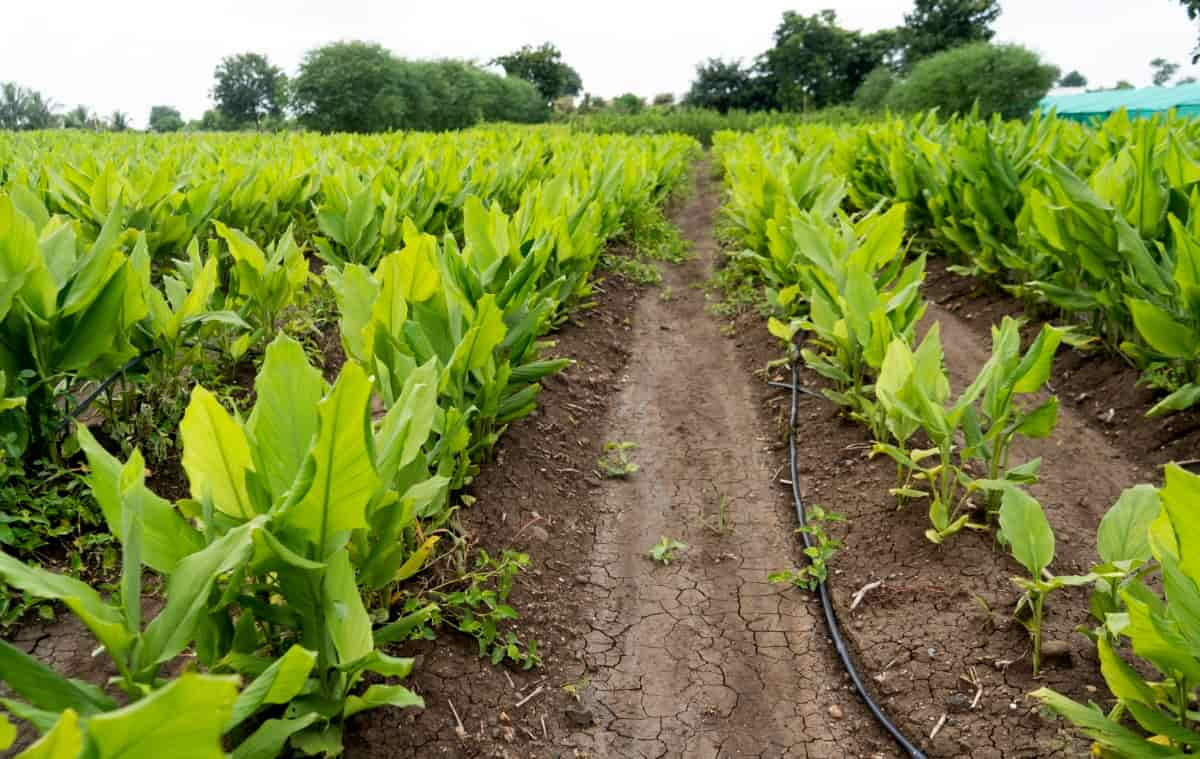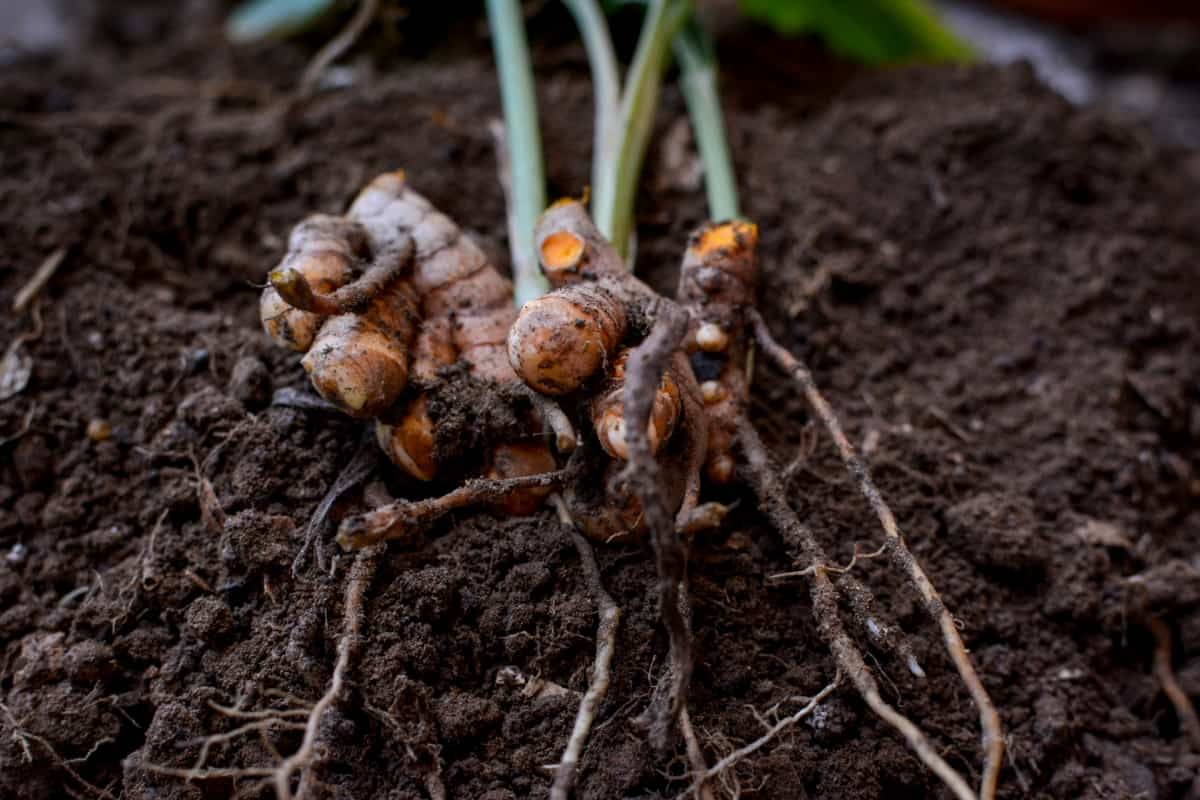Turmeric plants, a valuable member of the ginger family, can be challenging to grow due to their sensitivity to soil pH and other environmental conditions. When these conditions are not met, it can lead to turmeric plants dying prematurely. Many factors can cause a turmeric plant to die, including disease, pests, and environmental stress. Knowing what is causing the plant to die and how to resolve the problem can help keep your turmeric plants healthy.

9 Causes of Dying Turmeric Plants
Why is My Turmeric Plant Dying in Summer Heat, and How Can I Save It?
Summer heat can be especially hard on turmeric plants, and if you’re seeing signs of your turmeric plant dying, it’s important to take action as soon as possible. Turmeric plants need plenty of water and warmth to thrive in the summer; if these conditions are not met, the plant can suffer. If your turmeric plant is dying in the summer heat, there are several steps you can take to save it.
First, make sure your turmeric plant is getting plenty of water. Turmeric plants do best with regular, deep watering during the summer months. Ensure the soil should be moist but not wet, and water your plant in the morning or evening rather than during the day’s heat. Consider moving your turmeric plant to a shadier spot if it is in a pot.
Preventing Turmeric Plant Death from Fungal Infections
Fungal infections can cause serious damage to turmeric plants, leading to their death if left untreated. Taking preventive measures to protect your turmeric plants from fungal infections is important. Here are some tips for preventing and effectively treating turmeric plant death from fungal infections.
Preventive Measures
- Plant turmeric in well-drained soil or raised beds to prevent waterlogging.
- Provide your turmeric plants with plenty of sunlight and air circulation to reduce the chances of fungal infections.
- Use mulch to help maintain soil moisture and prevent fungal growth.
- Avoid overhead watering and water the plant at the soil level.
Effective Remedies
- Remove infected parts of the plant and discard them away from the garden.
- Treat the infected area with an appropriate fungicide.
- If the infection is widespread, use a systemic fungicide that the plant can absorb.
- Avoid using chemical fertilizers, as they can increase the risk of fungal infections.
Identifying Nutrient Deficiencies in Turmeric Plants and Remedies to Revive Them
Like all plants, it can suffer from nutrient deficiencies if not properly cared for. Identifying nutrient deficiencies in turmeric plants and providing remedies to help revive them is essential for successful cultivation. Turmeric plants’ most common nutrient deficiencies are nitrogen, phosphorus, and potassium. To identify nutrient deficiencies in turmeric plants, look for signs of yellowing leaves, poor root development, or stunted growth.
To help revive the plant, test the soil to determine its nutrient composition. You can also use fertilizer to supplement the soil with additional nutrients. If the soil is already nutrient-rich, you can use liquid fertilizers that the plant can quickly absorb. Another great way to revive a turmeric plant is to mulch around the plant’s base. This will hold moisture in the soil and protect the roots from extreme temperatures. Additionally, regularly water the plant and feed it compost or organic matter to help enrich the soil.
How to Protect Turmeric Plants from Pests and Diseases to Prevent Decline and Death
- Remove any dead or decaying leaves or stems which can attract pests and diseases.
- Apply a pesticide or fungicide to your turmeric plants to protect them. Follow the instructions to ensure you are applying the correct amount.
- Keep your plants in slightly acidic soil. Turmeric plants prefer slightly acidic soil, which can help prevent fungal diseases.
- Provide your turmeric plants with plenty of sunlight. Place your plants in an area exposed to at least six hours of sunlight daily.
In case you missed it: 9 Causes of Dying Avocado Tree and How to Fix It?

Overwatering Issues in Turmeric Plants: Signs, Symptoms, and Steps to Rescue a Dying Plant
Unfortunately, turmeric plants are also susceptible to overwatering, which will cause serious issues if left untreated. To identify an overwatering issue in turmeric plants, look for the following signs: yellowing leaves, wilting, root rot, fungal growth, and stunted growth. These all tell that your plant is receiving too much water. If you identify these symptoms, acting quickly to save your plant is important.
To rescue a dying turmeric plant is to reduce the water it receives. This might mean increasing the time between waterings or reducing the water given each time. You should also consider switching to well-draining potting soil to prevent the roots from staying too wet. And also, prune off any dead or dying leaves and roots to promote new, healthy growth. If the plant is thriving in a pot, it might be beneficial to repot the plant in a larger container with fresh soil.
Underwatering Issues in Turmeric Plants: Signs, Symptoms, and Steps to Rescue a Dying Plant
Underwatering issues in turmeric plants can be a serious problem. These issues can lead to wilting, yellowing of the leaves, and a weakened root system – all of which will cause the plant to die if not addressed quickly. If you suspect that your turmeric plant is suffering from underwatering, there are steps you can take to try to save it.
First, check the soil for dryness. If it is, then it’s time to water your plant. Water them deeply so that the water will reach the roots. Second, if your plant is severely wilted, you can try to revive it by misting the leaves with water. This will rehydrate the plant and bring it back to life.
Turmeric Plant Winter Damage/dying: Protecting Plants from Frost and Cold Temperatures
Unfortunately, it is vulnerable to frost and cold temperatures during the winter, which can cause extensive damage and even cause the plant to die. To protect turmeric plants from winter damage, understand the best strategies for protecting them from frost and cold temperatures.
- Protect your turmeric plants from winter damage is to making sure they are in a warm, dry place. When selecting a location for your turmeric plants, look for areas that are sheltered and protected from the elements.
- During the winter, the soil can dry out quickly, so check the moisture level regularly and water as needed.
- Additionally, you should mulch the plants with a thick layer of organic materials like straw, leaves, or grass clippings. This will insulate the plant’s roots from the cold temperatures and will also help to retain moisture.
- If temperatures drop below freezing, you may want to cover your turmeric plants with a frost blanket or burlap.
Improper Pruning May Cause Turmeric Plant Death: Pruning Methods for Healthy Growth
Pruning is an important part of turmeric plant care, but improper pruning can lead to the death of the plant. To keep turmeric plants healthy and growing, it’s important to understand the correct pruning methods. The first step in pruning a turmeric plant is to remove dead, diseased, or damaged leaves and stems. This can be performed throughout the growing season to keep the plant healthy. It’s also important to prune away any weak or spindly growth from the plant.
When pruning, leave enough foliage so the plant can still photosynthesize. Turmeric plants growing in containers may need to be pruned more often than in the ground. This is because container-grown plants grow more quickly and can easily become overgrown. To prevent this, prune the plant back to keep it at a manageable size.
Reviving a Stressed Turmeric Plant: Rehabilitation Methods for Overall Recovery
Unfortunately, it can be quite susceptible to stress. Symptoms of a stressed turmeric plant can include wilting, leaves turning yellow, and a decrease in the production of rhizomes (the underground stems). To help bring stressed turmeric back to its healthy state, a few rehabilitation methods can be employed. It is important to determine if the stress is due to a lack of nutrients, incorrect soil pH levels, incorrect watering levels, or other environmental factors. Once the reason causing the problem is identified, it can be controlled with appropriate methods.
In case you missed it: 9 Causes of Dying Guava Tree and How to Fix It?

Conclusion
By following the tips which are discussed above, you can ensure that your turmeric plants remain healthy and flourish. With the proper care and attention, your turmeric plants will grow healthy and produce delicious and nutritious turmeric!
- Feed Your Flock for Less: Top 10 Tips to Save on Chicken Feed
- Ultimate Guide to Ossabaw Island Hog: Breeding, Raising, Diet, and Care
- Hatching Answers: The Top 10 Reasons Your Chickens Aren’t Laying Eggs
- Eggs and Economics: Breaking Down the Cost of Raising Backyard Chickens
- Defend Your Greens: Proven Methods to Keep Iguanas Out of Your Garden
- Ultimate Guide to Cinnamon Queen Chicken: A Comprehensive Guide for Beginners
- Ultimate Guide to California Tan Chicken: Breeding, Raising, Diet, Egg-Production and Care
- Ultimate Guide to Marsh Daisy Chicken: Breeding, Raising, Diet, and Care
- 10 Types of Chicken Farming Businesses You Can Start for Profits